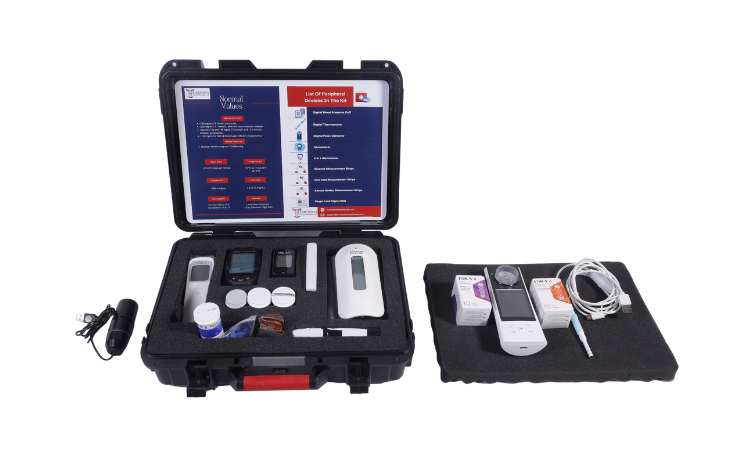Choosing the best virtual care platform for your practice: A How To Guide
Introduction:
As the healthcare landscape evolves, virtual care platforms have become essential tools for physician groups seeking to deliver quality care while meeting the needs of patients in a digital age. However, with a plethora of options available, selecting the right virtual care platform can be daunting. In this article, we'll explore key considerations for physician groups when choosing a virtual care platform and highlight important features to look for to ensure optimal patient care and practice efficiency.
Understanding Your Needs:
Before diving into the selection process, it's crucial for physician groups to assess their specific needs and goals. Consider factors such as:
1. Patient Population: Understand the demographics and preferences of your patient population to determine the types of virtual care services they're likely to utilize.
2. Practice Workflow: Evaluate your practice's existing workflows and identify areas where virtual care can complement or streamline existing processes.
3. Integration Requirements: Determine whether the virtual care platform seamlessly integrates with your electronic health record (EHR) system and other practice management tools to ensure smooth data exchange and continuity of care.

Key Considerations When Choosing a Virtual Care Platform:
1. Ease of Use: Look for a user-friendly platform that is intuitive for both clinicians and patients to navigate, minimizing training requirements and ensuring a seamless user experience.
2. Comprehensive Feature Set: Choose a platform that offers a comprehensive suite of features, including video consultations, secure messaging, appointment scheduling, electronic prescribing, and remote monitoring, to meet the diverse needs of your practice and patients.
3. Security and Compliance: Prioritize platforms that adhere to stringent security and privacy standards, such as HIPAA compliance, to safeguard patient data and maintain regulatory compliance.
4. Customization Options: Seek platforms that allow for customization to adapt to the unique needs and branding of your practice, including the ability to tailor workflows, messaging templates, and appointment scheduling preferences.
5. Interoperability: Ensure that the virtual care platform integrates seamlessly with your existing systems and workflows, including EHRs, practice management software, and billing systems, to facilitate interoperability and data exchange.
6. Scalability: Choose a platform that can scale with your practice as it grows, offering flexibility to accommodate increasing patient volume and expanding service offerings.
7. Technical Support and Training: Select a vendor that provides robust technical support, training resources, and ongoing updates to ensure optimal platform utilization and user satisfaction.
Pricing and Hardware Considerations
As physician groups navigate the sea of virtual care providers, pricing and hardware offerings are critical factors to consider when making an informed decision. Here's how to evaluate these aspects effectively:
Pricing Structure:
1. Transparent Pricing: Look for virtual care providers that offer transparent pricing models with clear breakdowns of costs for software licenses, support services, and any additional features or add-ons.
2. Scalability and Flexibility: Choose a provider that offers flexible pricing options tailored to the size and needs of your practice, with scalability to accommodate growth and changes in service utilization over time.
3. Value for Money: Assess the overall value proposition of each provider, considering factors such as feature richness, quality of service, reputation, and customer support, in addition to pricing alone.
4. Subscription vs. Pay-per-Use: Evaluate whether the provider offers subscription-based pricing or pay-per-use models and determine which aligns best with your budget and usage patterns.
5. Hidden Costs: Beware of hidden costs, such as setup fees, customization charges, or per-transaction fees, and ensure that all costs are transparently communicated upfront to avoid unexpected expenses.

Hardware Support:
1. Integrated Hardware Solutions: Inquire whether the virtual care provider offers integrated hardware solutions, such as telemedicine carts or remote monitoring devices, to complement their software platform and enhance the delivery of virtual care services.
2. Compatibility and Interoperability: Ensure that any hardware provided by the vendor is compatible with their software platform and integrates seamlessly with existing systems, including EHRs and practice management software.
3. Technical Specifications: Evaluate the technical specifications of the hardware offered, including performance capabilities, connectivity options, security features, and ease of use, to ensure it meets the needs of your practice and patients.
4. Cost Considerations: Assess the total cost of ownership of any hardware solutions offered by the provider, including upfront costs, ongoing maintenance expenses, and potential upgrades or replacements, to determine their affordability and long-term value.
5. Support and Maintenance: Clarify the level of support and maintenance provided for hardware solutions, including warranty coverage, technical support, and service agree
HDecision-Making Process:
1. Needs Assessment: Conduct a thorough assessment of your practice's needs, priorities, and budget constraints to identify the most important features and considerations when evaluating virtual care providers.
2. Vendor Comparison: Compile a list of prospective virtual care providers and conduct a side-by-side comparison of their pricing structures, hardware offerings, software features, reputation, and customer reviews to narrow down your options.
3. Demo and Trial Period: Take advantage of demo sessions and trial periods offered by virtual care providers to test their platforms, evaluate their ease of use, and assess the compatibility of any hardware solutions provided.
4. Consultation and Negotiation: Engage in consultations with shortlisted providers to discuss your specific requirements, negotiate pricing terms, and clarify any questions or concerns regarding hardware support and pricing.
5. Final Decision: Make an informed decision based on a comprehensive evaluation of each provider's pricing, hardware offerings, software features, customer support, and overall fit with your practice's needs and goals.
By carefully evaluating pricing structures, hardware offerings, and other key considerations, physician groups can select the right virtual care provider to support their practice's transition to digital healthcare delivery effectively.
Final Thoughts:
In an increasingly digital healthcare landscape, selecting the right virtual care platform is essential for physician groups seeking to enhance patient care, improve practice efficiency, and stay competitive in a rapidly evolving market. By carefully evaluating their needs, prioritizing key considerations, and choosing a platform that aligns with their goals and workflows, physician groups can harness the power of virtual care to deliver high-quality, patient-centered care in a convenient and accessible manner.



















































